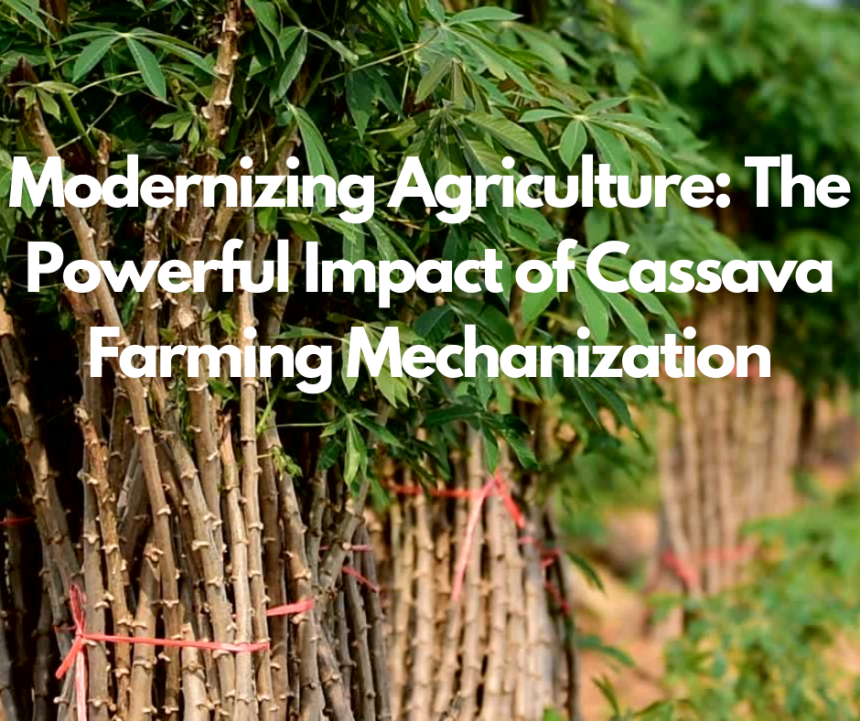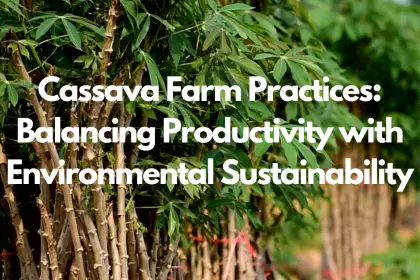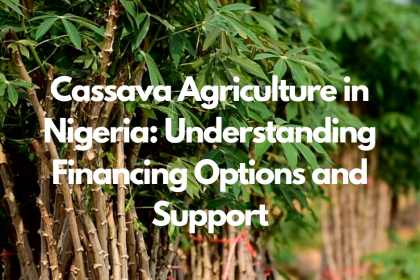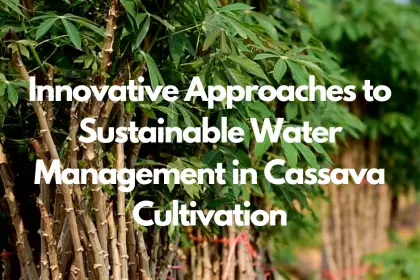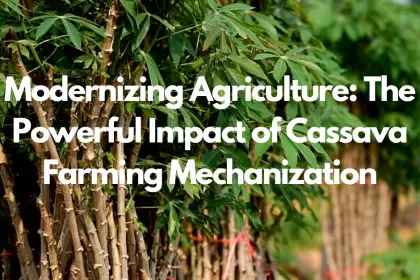Modernizing the processing of cassava emerges as a pivotal factor for national development, especially within developing countries rich in this staple crop. Food production, including cassava processing, boosts GDP, mitigates poverty, and generates employment opportunities. With cassava serving as a fundamental food source in tropical regions and numerous African nations, its impact on diets is profound, feeding over 800 million individuals and making up more than half of the daily intake in certain areas.
This article delves into the transformative role of processing technologies in cassava production, covering various forms including cassava chips, cassava starch, and gari. Highlighting the enhancements in profitability, storage facilities, and the utilization of cassava leaves and cassava gari for animal feed, readers will gain insights into the significance of advancement in processing methods. Through case studies and technology exploration, the piece provides a comprehensive understanding of the challenges and future prospects in the cassava processing sector.
Understanding Cassava Processing Technologies
Innovations in cassava processing technologies have significantly enhanced efficiency and profitability for small-scale enterprises. A notable development is the reengineering of small-scale flash dryers, which have achieved:
- Energy and Cost Efficiency: The reengineered flash dryers have reduced energy expenditures and production costs, making cassava processing more sustainable.
- Productivity and Income Gains: With 10-15% gains in productivity and incomes, these dryers support the economic growth of small-scale cassava processing enterprises.
- Scaling and Diagnostic Methods: The Scaling Readiness framework facilitates the expansion of these improved dryers to the private sector in various countries. A diagnostic method aids in identifying technical bottlenecks and measuring outcomes during scaling-out projects.
Furthermore, advancements in Plant Knowledge Management (PKM) in Nigeria address cassava plantation challenges, such as low multiplication rates of planting materials. Portable devices like ICheckTM carotene and color instruments, alongside Near-infrared spectroscopy (NIRS), offer rapid field evaluation of carotenoids content and predict starch physiochemical properties. These technologies not only streamline cassava processing but also enhance the nutritional analysis of cassava products, contributing to both food security and economic development in regions reliant on cassava as a staple food and industrial raw material.
Impact of Processing Technologies on Profitability
The integration of improved cassava processing technology plays a pivotal role in enhancing the profitability and sustainability of cassava production. By examining the significant impacts of these technologies, it becomes evident how they contribute to economic growth, environmental sustainability, and the achievement of the Sustainable Development Goals (SDGs).
- Increased Yield and Reduced Losses: The adoption of advanced processing technologies can lead to a significant increase in yield, with a notable reduction in post-harvest losses. This efficiency boost directly translates to higher profitability for cassava producers.
- Cost Reduction and Productivity Increase:
-
- Mechanization can result in a 30% increase in productivity.
- New technologies can lead to a 20-30% reduction in production costs.
- Overall, the use of improved technology can increase profitability by up to 50%, with small-scale processors seeing a return on investment within two years.
- Economic and Environmental Benefits:
-
- Sustainable processing technologies reduce water usage and energy consumption.
- By-products are transformed into valuable commodities such as animal feed and organic fertilizers.
- The global cassava processing market is projected to grow, fueled by the demand for cassava-based products, indicating a lucrative future for processors who adopt these technologies.
These advancements not only bolster the economic standing of cassava processors but also align with global efforts towards sustainable agriculture, poverty reduction, and responsible consumption and production.
Case Studies on Successful Cassava Processing
Farmers processing their cassava tubers into products like gari have seen notable benefits, underscoring the importance of value addition before sale. This approach aligns with the Presidential Initiatives on cassava development in Nigeria, which have significantly propelled the growth of the cassava industry. The initiatives have encouraged both new entrants and existing players to invest in micro-processing, fostering a vibrant ecosystem for both small and large-scale processing industries.
- Case Studies Highlighting Success:
-
- The Natural Resources Institute (NRI) of the University of Greenwich showcases a thriving cassava production business model.
- Kaifeng Sida Agricultural Products Equipment Co., Ltd specializes in manufacturing cassava starch processing machinery, contributing to the sector’s success.
- CloudFarmFunds, an agricultural enterprise, offers investment opportunities in cassava production, demonstrating profitability and sustainability in the sector.
Internationally, countries like Indonesia and Angola have leveraged cassava processing to stimulate GDP growth, job creation, and poverty reduction. Indonesia’s focus on cassava processing has resulted in significant economic benefits, mirroring Angola’s success in revenue generation and economic development through cassava processing. Additionally, Nigeria’s strategy to diversify its economy by emphasizing agriculture, including cassava production, highlights the crop’s potential in mitigating reliance on oil revenues.
Challenges in Adopting Modern Cassava Processing Technologies
Adopting modern cassava processing technologies (RCPPs) encounters several hurdles, significantly impacting the scalability and efficiency of cassava production in Nigeria. These challenges can be broadly categorized into three main areas:
- Infrastructure and Technical Constraints:
-
- Inadequate machinery and lack of processing facilities hinder operational efficiency.
- Rapid postharvest deterioration and diseases like cassava mosaic and brown streak disease pose significant threats to yield.
- A notable 91.5% of processors face inadequate funds, while 88.6% struggle with a lack of technical know-how.
- Financial and Institutional Barriers:
-
- High cost of mechanization and purchase, coupled with stringent credit facility conditions, limit access to necessary technologies.
- Insufficient funds and inadequate extension agents contribute to a lack of support and guidance for farmers.
- Socio-economic and Policy-related Issues:
-
- Policy inconsistency, political instability, and government paper policy on agriculture create an unpredictable environment for investment.
- Cultural and religious factors, along with conservatism among farmers, slow down the adoption of new technologies.
Addressing these challenges requires a multi-faceted approach, focusing on improving infrastructure, increasing financial support, and fostering a stable policy environment.
Technological Innovations and Future Prospects
In the realm of cassava processing, technological innovations and future prospects are poised to revolutionize the industry, enhancing profitability and sustainability. The advancements are centered around genomic tools, biotechnology, and digital technologies, each contributing uniquely to the processing of cassava.
- Genomic Tools and Resources:
-
- Thousands of simple sequence repeats (SSR) markers and a cassava chromosome-scale reference genome facilitate precise cassava breeding.
- A haplotype map with 25.9 million SNPs and 19 million indels aids in genetic diversity studies, distinguishing between African and South American germplasm.
- High-throughput genotyping platforms, like the GoldenGate assay, and cost-effective genotyping by sequencing, support the development of disease-resistant cassava varieties with higher yield potential.
- Biotechnological Advancements:
-
- Molecular markers enable the assessment of improved variety adoption and guide parental selection in breeding programs.
- Disease-resistant cassava varieties developed through biotechnology exhibit significantly higher yield potential.
- Digital Technologies and Sustainable Practices:
-
- Integration of IoT in the cassava supply chain streamlines operations, enhancing efficiency from farm to market.
- Solar-powered pre-heater and multipurpose hammermill, developed in collaboration with local partners in Tanzania and Ghana, reduce fuel consumption and greenhouse gas production, showcasing the potential for renewable energy in cassava processing.
These innovations not only promise to increase yield and income for farmers but also align with efforts towards sustainable food production. The adoption of these technologies, supported by adequate funding and literacy programs, could significantly transform the cassava processing landscape.
Conclusion
Throughout this exploration of cassava processing and its significant impact on profitability and sustainability, we’ve traversed from the transformative role of modern technologies to the broad implications they hold for small-scale enterprises and national economies alike. By delving into the advancements in processing methods, such as the reengineering of flash dryers and the integration of Plant Knowledge Management, we’ve underscored not only their potential to enhance efficiency and yield but also their contribution towards achieving Sustainable Development Goals. These innovations present a solid foundation for future growth, offering a beacon of hope for both current and future cassava processors in overcoming the barriers to profitability and sustainability.
As we look towards the horizon, the promise of genomic tools, biotechnological advancements, and digital technologies illuminates the path for the cassava processing industry. The case studies and challenges laid out accentuate the necessity for a collaborative effort in addressing the hurdles faced by processors, highlighting the critical role of policy support, financial accessibility, and education in fostering an environment ripe for innovation. By embracing these advancements and strategies, the cassava processing sector stands on the cusp of a new era, poised to significantly contribute to economic development, food security, and environmental sustainability. This collective journey towards improved cassava processing technologies does not only signify an advancement in agricultural practices but marks a pivotal step in enhancing the livelihoods of millions depending on cassava as a staple food and income source.
FAQs
What methods are used to process cassava for consumption?
Cassava is processed into food through a combination of techniques that typically include fermentation, drying, and cooking. Fermentation is particularly crucial in many cassava processing methods. The techniques for fermenting cassava are mainly divided into two types: solid-state fermentation and submerged fermentation.
How does the economic analysis of cassava production look?
The economic analysis of cassava production indicates it is a profitable venture, with total revenue averaging 174,231.81k per hectare, an average profit of 54,069.57k, and a gross margin of 62,449.11k. The net return for farmers is positively influenced by factors such as the usage of fertilizer, the price per cassava truck, and the total revenue generated.
Is the cassava processing business lucrative in Nigeria?
Yes, cassava processing is a highly lucrative business in Nigeria, as cassava-based foods are widely consumed there. Despite this, many cassava farmers earn minimal profits because they do not process their cassava, missing out on additional income opportunities.
What are the ways to boost cassava yields?
To enhance cassava yields, farmers should select stem cuttings from plants that have demonstrated high root yields for use as planting material. Implementing this straightforward strategy can significantly increase cassava production, which is particularly effective for traditional varieties that may be more vulnerable to pests and diseases.

